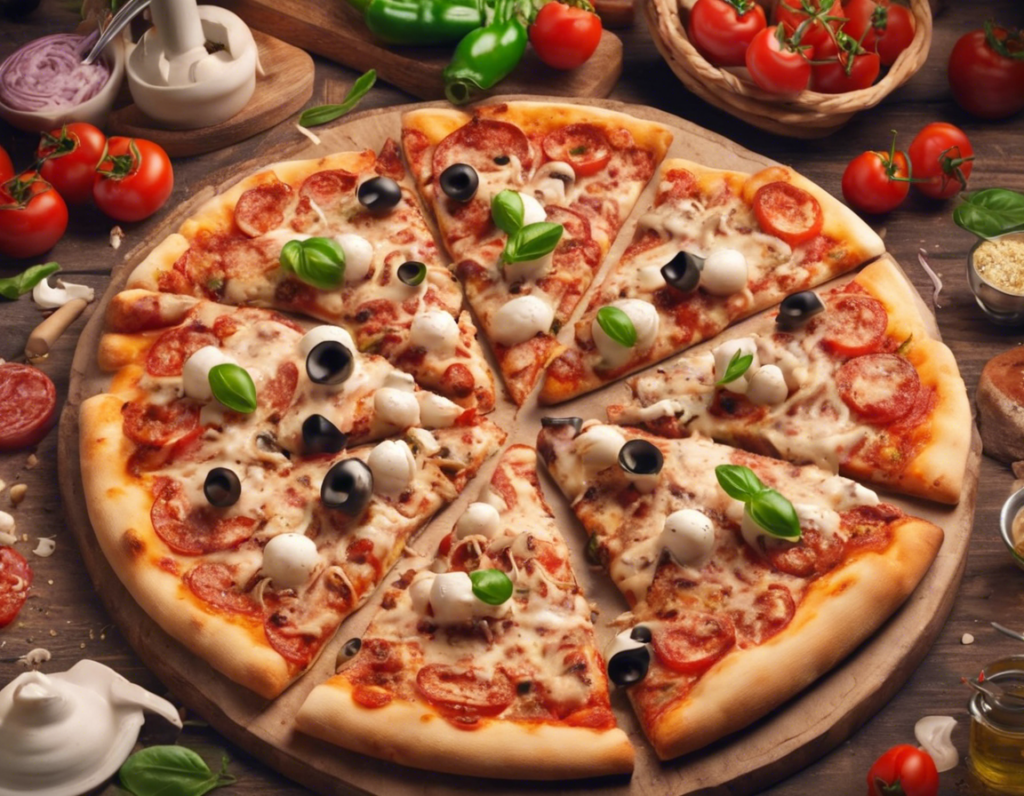
- May 18, 2024
- 5:58 am
- No Comments
In recent times, a video showcasing the preparation of a unique culinary creation known as “Kulhad Pizza” has taken social media by storm, garnering thousands of likes, shares, and comments. The distinctive concept of combining traditional Indian earthenware (Kulhad) with a universally loved dish like pizza has piqued the interest of food enthusiasts worldwide. This fusion of global and local flavors serves as a testament to the creativity and innovation prevalent in the contemporary culinary landscape.
Embracing Culinary Fusion
Culinary fusion is a phenomenon that has gained significant traction in the modern gastronomic scene. It involves blending elements from diverse culinary traditions to create innovative and exciting new dishes. By infusing traditional dishes with contemporary twists, chefs can appeal to a broader audience while simultaneously celebrating culinary diversity.
The Rise of “Kulhad Pizza”
The concept of Kulhad Pizza exemplifies the harmonious fusion of traditional and modern culinary elements. By using a traditional Indian clay cup (Kulhad) as the base for the pizza, creators of this dish are able to add a unique twist to a popular Italian classic. The porous nature of the Kulhad allows for even heating, resulting in a crispy and flavorful crust that sets it apart from conventional pizza bases.
How to Make Kulhad Pizza
Creating a Kulhad Pizza involves several steps that fuse traditional Indian cooking methods with modern pizza-making techniques. Here is a simplified recipe to guide you through the process:
Ingredients:
- Pizza dough
- Pizza sauce
- Cheese (Mozzarella, Parmesan, or any preferred cheese)
- Toppings of your choice (vegetables, meat, herbs, etc.)
Instructions:
- Preheat your oven to the appropriate temperature for pizza baking.
- Roll out the pizza dough to fit the size of the Kulhad’s opening.
- Place the rolled-out dough into the Kulhad, ensuring it covers the entire inner surface.
- Add a generous amount of pizza sauce, followed by your choice of cheese and toppings.
- Carefully place the Kulhad in the preheated oven and bake until the cheese is melted, and the crust is golden brown.
- Remove the Kulhad Pizza from the oven, garnish with herbs, if desired, and serve hot.
Benefits of Kulhad Pizza
1. Unique Presentation: The Kulhad serves as an unconventional yet visually appealing vessel for serving pizza, making it an instant conversation starter at gatherings and events.
2. Enhanced Flavor: The porous nature of the Kulhad allows the pizza crust to absorb flavors from the clay, providing a distinct taste that complements the toppings.
3. Cultural Appreciation: By incorporating traditional Indian cookware into a contemporary dish, Kulhad Pizza celebrates culinary heritage and promotes cultural exchange.
FAQs About Kulhad Pizza
1. What is a Kulhad?
A Kulhad is a traditional Indian clay cup used for serving hot beverages like chai. Its porous nature helps in retaining heat and imparting a unique flavor to the contents.
2. How does the Kulhad affect the taste of the pizza?
The clay material of the Kulhad can enhance the flavors of the pizza crust, giving it a slightly earthy undertone that complements the toppings.
3. Can I use any type of pizza dough for making Kulhad Pizza?
Yes, you can use your preferred pizza dough recipe for making Kulhad Pizza. Whether it’s store-bought or homemade, the choice is yours.
4. Are there any specific toppings that work best with Kulhad Pizza?
While you can choose any toppings you prefer, ingredients with robust flavors that can stand out against the earthiness of the Kulhad tend to work well. Consider using ingredients like spicy sausages, caramelized onions, or roasted vegetables.
5. Can Kulhad Pizza be made with a gluten-free crust?
Yes, you can adapt the Kulhad Pizza recipe to accommodate a gluten-free crust by using alternative flours like almond flour or gluten-free pizza dough mixes.
In conclusion, the viral trend of Kulhad Pizza highlights the endless possibilities for culinary innovation and cross-cultural exchange in the culinary world. By embracing fusion cuisine that merges traditional elements with contemporary trends, chefs and food enthusiasts alike can continuously push the boundaries of gastronomy, creating unforgettable dining experiences that resonate with diverse audiences globally.